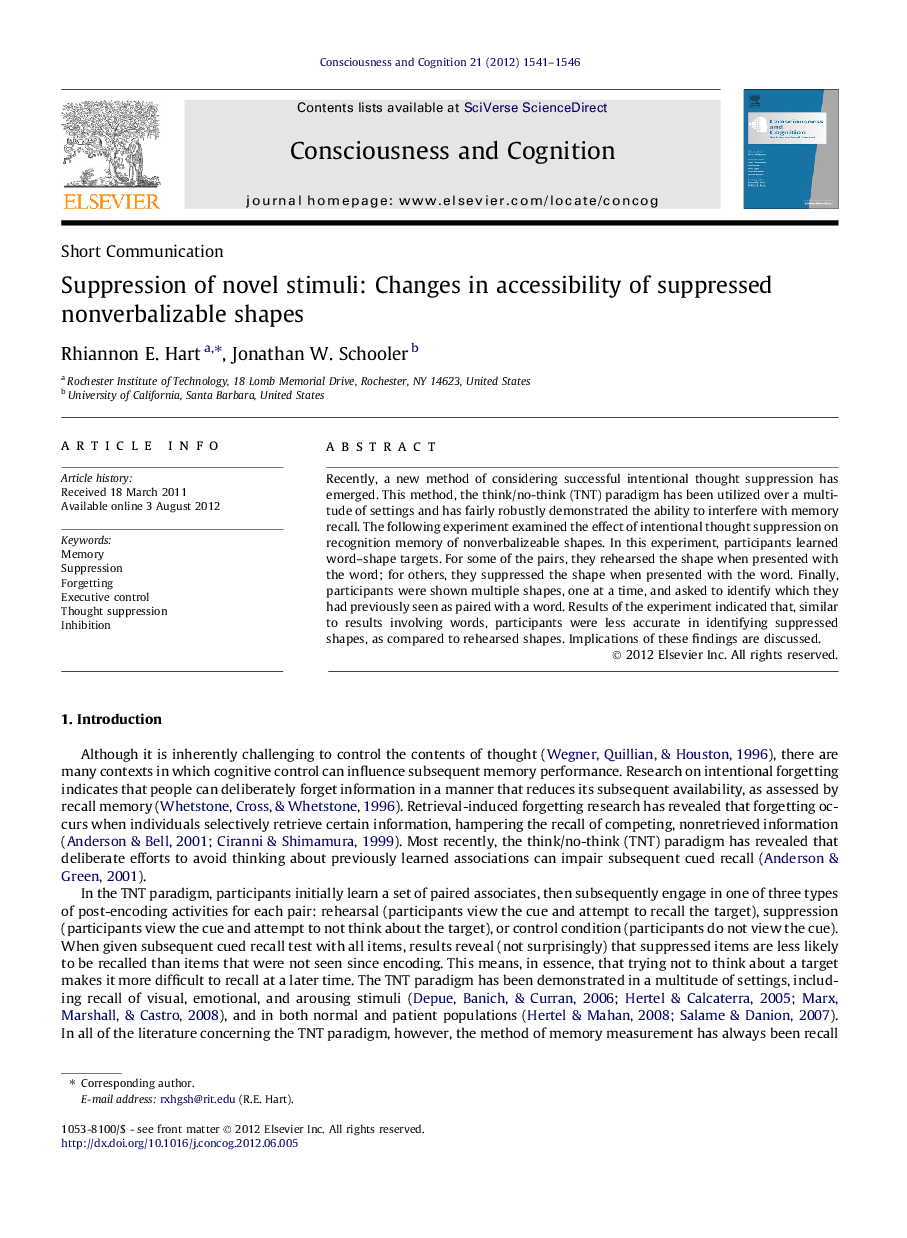| Article ID | Journal | Published Year | Pages | File Type |
|---|---|---|---|---|
| 927642 | Consciousness and Cognition | 2012 | 6 Pages |
Recently, a new method of considering successful intentional thought suppression has emerged. This method, the think/no-think (TNT) paradigm has been utilized over a multitude of settings and has fairly robustly demonstrated the ability to interfere with memory recall. The following experiment examined the effect of intentional thought suppression on recognition memory of nonverbalizeable shapes. In this experiment, participants learned word–shape targets. For some of the pairs, they rehearsed the shape when presented with the word; for others, they suppressed the shape when presented with the word. Finally, participants were shown multiple shapes, one at a time, and asked to identify which they had previously seen as paired with a word. Results of the experiment indicated that, similar to results involving words, participants were less accurate in identifying suppressed shapes, as compared to rehearsed shapes. Implications of these findings are discussed.
► We consider the effects of suppression on long-term memory when using recognition memory. ► The present research considers more complex stimuli, specifically nonverbalizable stimuli. ► Items that are suppressed are less well remembered than other items. ► This research expands our knowledge of intentional cognitive control processes on the ability to remember complex stimuli.
